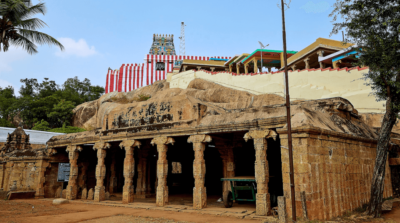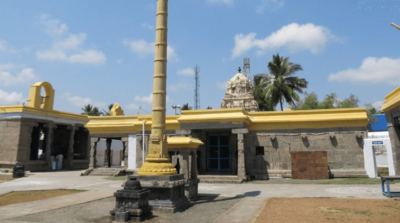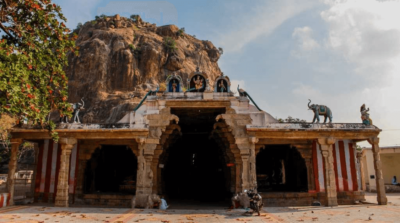Kumara Kottam Murugan Temple
The Kumarakottam Temple in Kanchipuram, Tamil Nadu, is a prominent temple dedicated to Lord Murugan, also known as Kumara or Skanda. It has a fascinating history rooted in Tamil mythology, Shaivism, and local traditions, marking it as one of the major temples in Kanchipuram, a city known as the “city of a thousand temples.”
Kumara Kottam Murugan Temple History
According to Hindu mythology, Kumarakottam is where Lord Murugan stood in penance between two major shrines, the Ekambareswarar Temple dedicated to Lord Shiva and the Kamakshi Amman Temple dedicated to Goddess Parvati. The legend states that Murugan, after teaching the meaning of the sacred mantra “Om” to his father, Lord Shiva, retired to this site to meditate. This act of Murugan symbolized his role as a teacher or Swaminatha, a significant aspect of his character in Tamil lore. The temple is thus connected to the legends of Murugan’s knowledge and wisdom.
Kumarakottam Temple’s current structure dates back to the early medieval period, possibly constructed by the Pallava dynasty, who were great patrons of Shaivism and Murugan worship. The Pallavas ruled Kanchipuram from the 6th to the 9th centuries AD, and they established many temples in the city. Kumarakottam is also mentioned in Tamil Sangam literature, which highlights Kanchipuram as a center for Murugan worship. Later dynasties, including the Cholas, Vijayanagar rulers, and Nayakas, contributed to the temple’s architectural development, renovation, and festivals, which are still celebrated today.
Influence of Saint Arunagirinathar and the Thirupugazh
The Kumarakottam Temple gained further importance in the 15th century with the arrival of Arunagirinathar, a Tamil poet-saint who was an ardent devotee of Murugan. He composed several hymns, known as Thirupugazh, in praise of Murugan at Kumarakottam. Arunagirinathar’s compositions elevated the temple’s significance, and it became known as a Thirupugazh Sthalam, a place extolled in his poetry. His verses continue to be sung by devotees, linking the temple with devotional Tamil literature and Murugan worship.
Unique Aspects of the Temple
The Kumarakottam Temple is unique in its architectural orientation, with Murugan’s shrine located between those of his divine parents—Shiva and Parvati—representing Murugan as a reconciler of energies. The main sanctum houses Murugan as Somaskanda, flanked by his consorts, Valli and Deivanai. The temple structure includes a rajagopuram (entrance tower) adorned with intricate carvings of deities and mythological scenes, reflecting Dravidian architectural style. Another notable feature is the presence of the Vel (Murugan’s spear) as a symbol of protection and wisdom.
Festivals and Worship
The temple is a major site for Murugan devotees, especially during festivals like Skanda Sashti, Thai Poosam, and Vaikasi Visakam, which celebrate Murugan’s mythological victories and his marriages to Valli and Deivanai. These festivals are marked by large gatherings, colorful decorations, and processions.
Devotional Practices and Beliefs
The Kumarakottam Temple is believed to bless devotees with wisdom, courage, and success, especially in pursuits of knowledge, as Murugan is also regarded as a deity of learning. Devotees offer special prayers for success in education, competitive exams, and career advancements, as well as for family harmony. The Prasadam (holy offering) here is considered particularly auspicious, especially the vibhuti (sacred ash) and panchamirtham (a mixture of five fruits and honey).
Today, Kumarakottam Temple remains a revered spiritual center in Kanchipuram, symbolizing Tamil Nadu’s devotion to Murugan and its vibrant religious heritage. Its mythological, historical, and cultural elements draw thousands of visitors and pilgrims each year, making it a place where tradition and faith continue to thrive.




